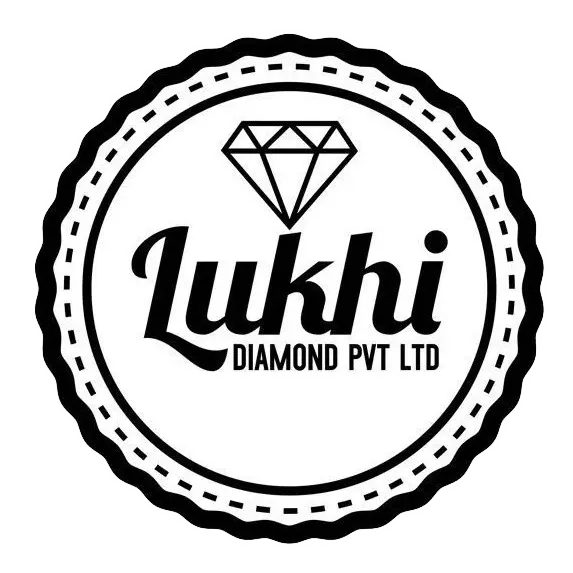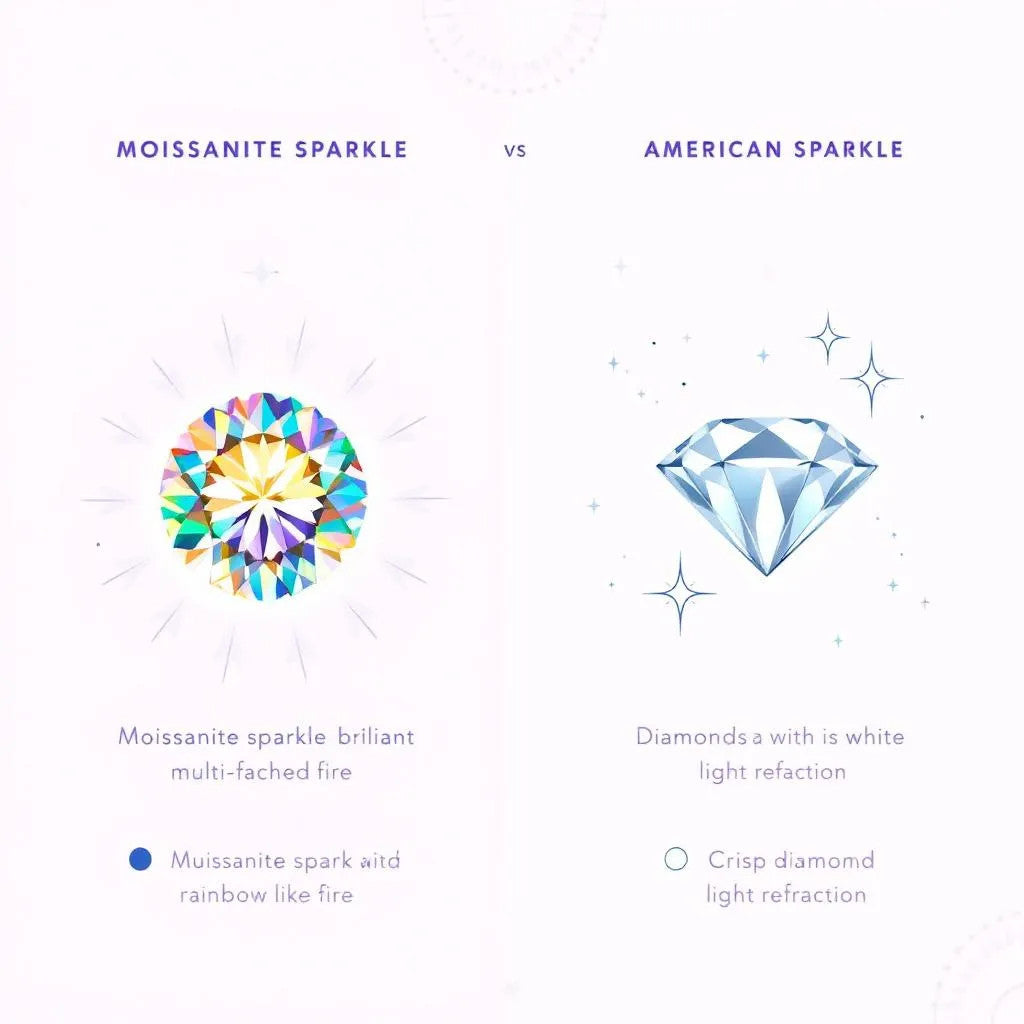Article: American Diamond vs Real Diamond: What’s the Difference?
American Diamond vs Real Diamond: What’s the Difference?
Hook: Whether you’re shopping for an engagement ring, statement necklace, or everyday studs, understanding the real differences between American diamonds (simulated) and real diamonds will save you money, time, and buyer’s remorse. Read this complete guide for clear comparisons, real-world examples, and step-by-step buying advice.
- American diamonds are high-quality simulated stones (often rhodium-plated/zirconia-based) made for jewellery-style brilliance at lower cost.
- Real diamonds are natural (or lab-grown) crystalline carbon stones with unmatched hardness and resale value.
- Choose American diamond for fashion, affordability, and styling variety; choose real diamond for heirloom durability and long-term value.
Table of Contents
- What Are American Diamonds?
- What Are Real Diamonds?
- Composition & Manufacturing
- Appearance & Sparkle
- Hardness & Durability
- Price Comparison
- Best Use-Cases
- How to Tell Them Apart (Step-by-step)
- Care & Cleaning
- Certification & Trust
- Environmental & Ethical Considerations
- Pros & Cons
- Side-by-Side Comparison Table
- Case Studies & Examples
- Styling Tips
- Step-by-Step Buying Guide
- FAQs
- Contact & Next Steps
What Are American Diamonds?

“American diamond” is a commercial name commonly used for high-quality simulated gemstones crafted to mimic the sparkle of true diamonds. They include materials like cubic zirconia (CZ), glass-based simulants, or plated crystals designed for jewellery fashion. These stones are cut to maximize brilliance and are often set in plated or sterling settings for an accessible price point.
Common materials sold as American diamond
- Cubic Zirconia (CZ)
- Synthetic crystals (cut glass)
- Rhodium-plated simulated stones
- Coated crystal hybrids
What Are Real Diamonds?

Real diamonds are crystalline carbon formed under high pressure and temperature. They can be natural (mined) or lab-grown (CVD/HPHT), share the same physical properties, and are graded for cut, color, clarity, and carat — the classic 4Cs.
Key features of real diamonds
- Exceptional hardness (10 on Mohs scale)
- Intrinsic resale and sentimental value
- Often accompanied by grading reports (GIA, IGI)
Composition & Manufacturing
American Diamond Manufacturing
Simulated stones are manufactured via crystal growth (for CZ) or precision glass cutting. Plate finishes and coatings are applied to boost brilliance.
Real Diamond Formation
Natural diamonds form geologically over millions of years. Lab-grown diamonds replicate conditions in controlled facilities producing real carbon crystals, chemically identical to mined stones.
Appearance & Sparkle
At first glance a well-cut American diamond can look stunning. But under magnification and different lighting, differences become clear.
Visual cues
- American diamonds often show more colorful fire (rainbow flashes) due to dispersion differences.
- Real diamonds have crisp, sharp facet junctions and a unique “diamond sparkle” combining brilliance and scintillation.
Hardness & Durability
Hardness is crucial for daily-wear jewellery. Real diamonds are Mohs 10 — extremely scratch resistant. American diamonds (CZ/glass) are far softer and prone to scratches and edge wear.
Practical implications
- Daily-wear rings: real diamonds win for longevity.
- Fashion jewellery: American diamond performs well when worn occasionally.
Price Comparison
Price is often the deciding factor. American diamonds cost a fraction of a similar-sized real diamond. Below is a simplified price band for context (approximate ranges).
| Stone Type | Typical Price Range (USD) | Typical Lifespan (With Care) |
|---|---|---|
| American diamond (CZ / simulated) | $10 – $300 | 1–5 years (daily wear shows wear) |
| Lab-grown real diamond | $800 – $6,000+ | Decades (equivalent to mined) |
| Mined real diamond | $1,200 – $50,000+ | Generations |
Best Use-Cases
When to choose American diamond
- Statement or seasonal jewellery
- Cost-sensitive fashion purchases
- Trend-driven pieces where changing styles are expected
When to choose a real diamond
- Engagement/heirloom jewellery
- Daily-wear pieces you want to pass down
- When long-term value and durability matter
How to Tell Them Apart — Step-by-Step
- Magnification (10x): Look for precise facet edges and internal inclusions (real diamonds often have natural inclusions; CZ usually appears “clean”).
- Fog test: Breath on the stone — CZ holds fog longer than a real diamond.
- Sparkle test: Observe under different lights; diamonds show more white brilliance and less rainbow dispersion than CZ.
- Thermal test: Diamonds disperse heat quickly — specialized testers distinguish them.
- Certification: Request a grading report for real diamonds.
Care & Cleaning
Cleaning American diamond
- Gentle warm soapy water, soft cloth; avoid ultrasonic cleaners if plated.
- Re-plating may be needed over time for plated settings.
Cleaning real diamonds
- Can tolerate stronger cleaning (ultrasonic) if settings and treatment allow.
- Regular professional checks recommended for prongs/cups.
Certification & Trust
Real diamonds frequently come with lab reports (e.g., GIA, IGI). American diamonds do not require certification but quality descriptions and return policies matter. Always buy from trusted retailers.
Environmental & Ethical Considerations
Lab-grown diamonds reduce mining impact. Simulated stones have different supply chains; evaluate brand practices and policies when sustainability matters to you.
American Diamond — Pros
- Affordable
- Great visual impact for price
- Wide design variety
American Diamond — Cons
- Lower durability
- Less long-term value
Real Diamond — Pros
- Durability (for daily wear)
- Emotional and resale value
Real Diamond — Cons
- Higher cost
- Requires budget planning
Side-by-Side Comparison Chart
| Feature | American Diamond (Simulated) | Real Diamond (Natural/Lab) |
|---|---|---|
| Material | CZ / glass / coated crystals | Crystalline carbon |
| Hardness | Mohs 5–8 (varies) | Mohs 10 |
| Price | Low | Medium–High |
| Longevity | Short–Medium | Long (decades+) |
| Certification | Rare | Common (GIA, IGI) |
Case Studies & Examples
Case study 1 — Budget bridal set
A couple chose an American-diamond bridal set for fashion-forward styling while saving for a larger real diamond later. Outcome: stylish photos, lower upfront cost, swapped in a real center stone after five years.
Case study 2 — Daily wear engagement ring
Client selected a lab-grown diamond for durability and ethical reasons. Result: daily wear with minimal maintenance and preserved appearance after years.
Styling Tips — Look Luxurious on Any Budget
- Pair American-diamond statement pieces with gold-tone settings to elevate look.
- Use layering necklaces with mixed stones (real + simulated) for contrast.
- For heirloom vibe, choose classic settings and real side stones even if center is simulated.
Step-by-Step Buying Guide
- Define purpose: fashion vs heirloom.
- Set a realistic budget and stick to it.
- Inspect under magnification or request close-up photos/videos.
- Ask about return policy, warranty, and re-plating (for simulated stones).
- Request certification for real diamonds.
- Choose a trusted retailer and check customer reviews.
Shop loose diamonds Contact our experts
Practical Pricing Tips
- For real diamonds, prioritize cut first for best visual impact per dollar.
- For simulated stones, inspect for uniform color and secure setting.
Warranty, Repairs & Returns
Before purchase, review return policy and repair options. Simulated stones often need re-plating; real diamonds generally need prong checks and occasional cleaning.
For Lukhidiamond policies, visit our Terms & Conditions and Contact pages for details.
E-E-A-T: Real-Experience Paragraphs
At Lukhidiamond, we inspect each stone against strict quality checks — photographing every loose diamond and documenting measurements and clarity notes. Our team of bench-setters and gem specialists recommend stones suited to the intended daily wear and design of the setting. Real customers report multi-year satisfaction when choosing certified natural or lab-grown diamonds for everyday rings, while American diamond pieces perform best in curated fashion collections and seasonal sets.
Maintenance Checklist
- Monthly visual inspection for loose prongs.
- Quarterly gentle clean for fashion stones; annual professional clean for real diamonds.
- Re-plate settings as needed for simulated stones.
Highlight Box — Quick Decision Flow
- Low cost + high sparkle → American diamond
- Durability + long-term value → Real diamond (lab-grown or mined)
- Ethical sourcing → consider lab-grown or certified natural with verified policies
Final Thoughts & Next Steps
Both stone types have valid uses. The best choice aligns with your budget, lifestyle, and emotional goals. When in doubt, consult an expert and request close-up photos or a certificate for real diamonds.
FAQs
1. Are American diamonds the same as cubic zirconia?
Often yes — cubic zirconia (CZ) is a common material marketed under names such as “American diamond.” CZ is lab-made and visually brilliant but softer than diamond.
2. Can I wear American diamond jewellery every day?
You can, but expect faster wear: scratches, edge dulling, and potential re-plating. For everyday engagement rings, real diamonds are recommended.
3. Do American diamonds lose sparkle over time?
They can accumulate surface scratches and grime that reduce sparkle. Regular gentle cleaning and limited exposure to harsh chemicals helps maintain brilliance.
4. How much cheaper is an American diamond compared to a real diamond?
Price varies with size and quality, but simulated stones are typically a small fraction of the cost of comparable real diamonds.
5. Are lab-grown diamonds considered “real”?
Yes — lab-grown diamonds are real carbon crystals with the same physical and chemical properties as mined diamonds. They are graded similarly.
6. Will a jeweler be able to tell the difference?
Yes — trained jewellers use magnification, thermal testers, and gemological tools to distinguish simulants from real diamonds.
7. Where should I buy to avoid fakes?
Buy from reputable retailers with clear return policies, documented photos, and, for real diamonds, a grading report. For verified options, visit our collections or contact our team.
8. Can American diamonds be resized into different rings?
Yes, but resizing should be handled carefully; sometimes settings must be adjusted or remade to protect the simulated stone.
9. Do American diamonds have resale value?
Generally little to no resale value compared to real diamonds, which retain collectible or resale market interest.
10. How do I care for a real diamond ring daily?
Wipe with a soft cloth, avoid harsh chemicals, inspect prongs monthly, and schedule a professional clean annually or as needed.
Ready to choose?
Explore certified options or find a fashion-forward simulated piece in our inventory. Visit our Natural Diamonds collection, browse Loose Diamonds, or contact our specialists for personalized help.
Published by Lukhidiamond Editorial — practical buying guides and gemstone education.


Leave a comment
This site is protected by hCaptcha and the hCaptcha Privacy Policy and Terms of Service apply.